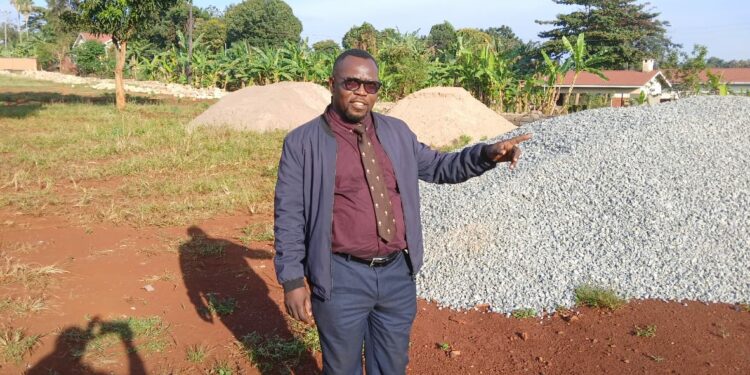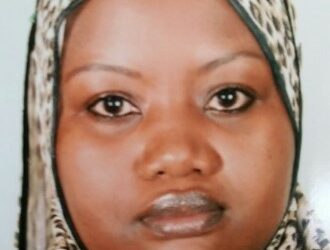In a significant development, the Uganda People’s Defense Forces (UPDF) Engineering Brigade has commenced work on a multi-billion project to construct a regional blood bank and other facilities in Busoga aimed at enhancing health service delivery in the region and country at large.
The project, located adjacent to the Jinja Regional Referral Hospital (JRRH) and the Muslim Cemetery, has been a long time coming with the land previously being a centre of conflict between the hospital and a section of the Muslims claiming ownership.
The Uganda Land Commission (ULC) , the custodian of all government land, ultimately clarified that the land belongs to the Ministry of Health and JRRH as the user department.
Dr. David Charles Mukisa, the Hospital Management Board chairperson, has welcomed the development, highlighting its potential to add significant value to the health sector in Busoga and beyond.
“…Busoga like most up country regions has struggled with blood shortages, resulting in avoidable deaths among accident victims, expectant mothers and anaemic patients…”,Dr Mukisa observed.
He says the new blood bank and other facilities are expected to address these challenges, providing a reliable blood supply and enhancing healthcare services in the region.
The project’s completion will be an important milestone in Uganda’s efforts through the Ministry of Health and development partners to improve healthcare infrastructure and save lives.
While the specifics of the contract remain undisclosed to the media, Dr David Charles Mukisa has assured the public that a groundbreaking ceremony will be held soon to mark the official commencement of the Busoga Regional Blood Bank project.
The First Deputy Prime Minister/Minister in charge of East African Community (EAC) Affairs Rt Hon Rebecca Alitwala Kadaga who has passion for growth and development in Busoga is expected to grace the ceremony whose date is yet to be announced.
During the ceremony, Dr. Mukisa promised to share more information about the project, including details of the contract, project timelines, and expected outcomes. The event will provide an opportunity for stakeholders, community members, and the ever inquisitive media to learn more.
A few heaps of materials like stones and aggregates are already on site, while the illegal perimeter wall that some Muslims had put in place has been pulled down, pending collection of the blocks by the group.
As part of the contract agreement, the brigade has also pulled down a section of the rusty makeshift perimeter wall of the hospital, which will be replaced with a new permanent one.
Some of the trees, including palm trees that acted as windbreaks, have also been cut down to pave the way to the new development, which has already triggered excitement.
The UPDF Engineering Brigade is responsible for various construction projects across Uganda, including health facilities.
A few months ago, the brigade also handed over an 800M/= renovated and upgraded Intensive Care Unit (ICU) at the JRRH.
The brigade is also now working on the renovation of Busoga University ahead of its grand opening next year as a public university.
What Is a Blood Bank?
According to the World Health Organization (WHO) and experts, a blood bank is a facility that collects tests, processes, and stores and distributes blood and blood products for transfusion purposes.
A blood bank typically constitutes the following:
Blood Collection-Donor Recruitment, Screening, and Blood collection; Testing: Blood typing, screening for infectious diseases (HIV/Hepatitis), and cross-matching.
Processing: separation of blood components (red blood cells, plasma, platelets).
Storage: proper storage of blood and blood products at suitable temperatures.
Distribution: Issuance of blood and blood products to hospitals and healthcare facilities.
A blood bank entails the following:
Quality assurance and control, donor management, Blood Inventory Management; compatibility testing transfusion medicine expertise, regulatory compliance, and continuous training and education.
The primary goal of a blood bank is to provide safe, high-quality blood and blood products to patients in need while ensuring the safety and well-being of blood donors.
When Did the Concept of Blood Bank Start?
According to antiquities, in 1894, a German-American surgeon Dr Richard Lweisohn stored blood in a glass container for several days, marking the beginning of blood storage.
In 1914, Dr Oswald Hope Robertson, a British physician, set up the first blood bank during World War I to supply blood to wounded soldiers.
Dr Alexander Bogdanov, a Russian physician, established the first permanent blood bank in Moscow, Russia.
In 1937, Dr Bernard Fantus, an American physician, coined the term “blood bank” and established the first modern blood bank at Cook County Hospital in Chicago, USA.
In the 1940s, blood banks became more widespread, especially during World War II, to supply military needs.
In the 1950s-1960s blood banking became more sophisticated with advances in blood typing, testing, and storage techniques.
The modern blood bank concept has evolved significantly since its inception, with ongoing improvements in technology, safety protocols, and quality control measures.
The first blood bank in Uganda was established at Mulago Hospital, which was then the country’s main referral hospital as it’s to date.
However, it was not until 2003 that the Uganda Blood Transfusion Service (UBTS) was officially launched as a national blood programme to coordinate and regulate blood banking activities across the country.
It should be noted that availability and reliability of blood banking services in Uganda have faced challenges over the years, including infrastructure limitations, funding constraints, and regulatory issues.
Efforts continue to improve the country’s bled banking system to ensure safe and adequate blood supplies for patients in need.
So, the efforts by the government of Uganda and its development partners to establish a regional blood bank for Busoga at the Jinja Regional Referral Hospital should be welcomed and supported unfettered.
Do you have a story in your community or an opinion to share with us: Email us at editorial@watchdoguganda.com












